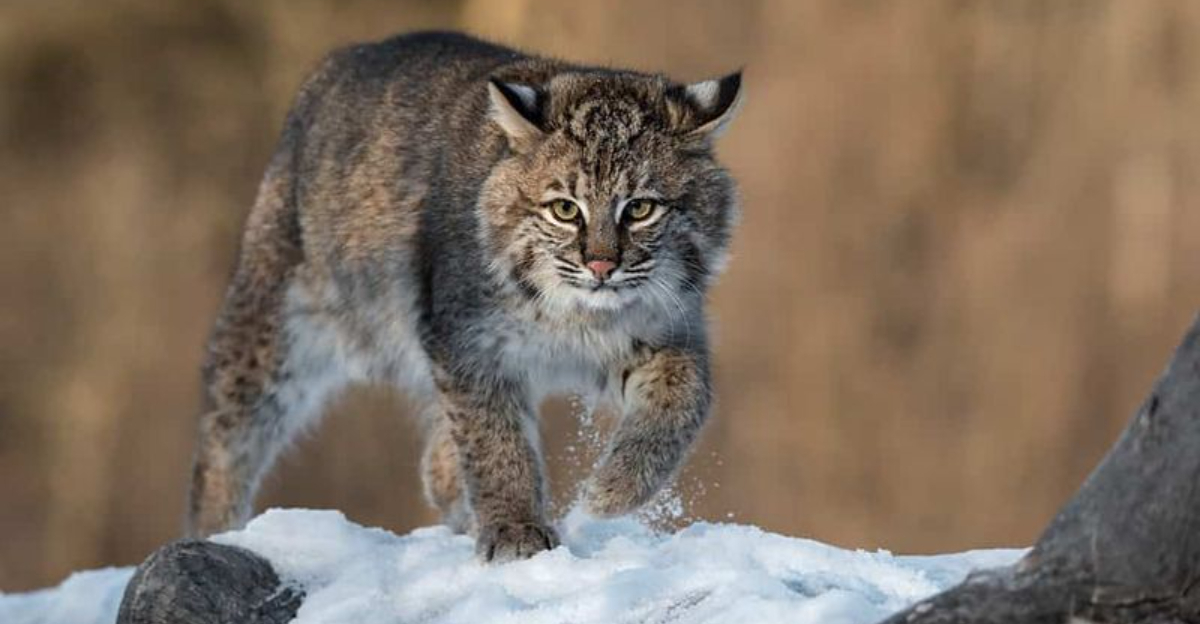Bobcats have captivated me ever since one silently crossed my hiking trail in Texas years ago—powerful, graceful, and gone in the blink of an eye.
These elusive predators are more widespread than most people realize, thriving in everything from dense forests to suburban neighborhoods.
While they tend to avoid humans, bobcats do occasionally wander into populated areas, which is why it’s important to know where they roam and how to safely coexist with these incredible wild felines.
1. Arizona’s Desert Dwellers

Bobcats absolutely love Arizona’s diverse habitats! I once saw a bobcat slipping between saguaro cacti near Tucson, nearly indistinguishable against the rocky backdrop. These adaptable cats thrive in Arizona’s deserts, mountains, and even suburban areas where development meets wilderness.
Their sandy-colored coats match the hues of the desert, making them nearly invisible until they move. During summer, they’re most active at dawn and dusk to avoid the scorching heat.
If hiking Arizona’s trails, keep dogs leashed and children close. Never approach a bobcat, and if one doesn’t immediately retreat, back away slowly while maintaining eye contact. No quick movements!
2. California’s Coastal Cats
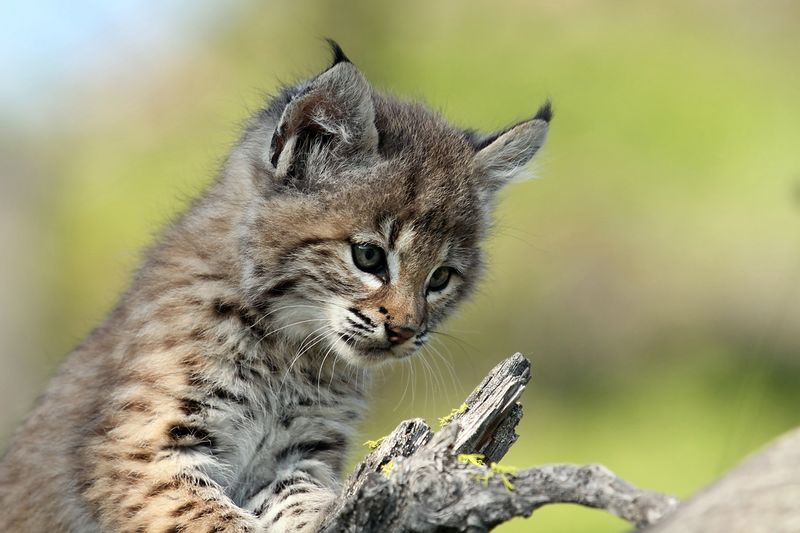
From the towering redwoods to the rugged chaparral hills, California’s varied landscapes provide the perfect home for thriving bobcat populations across the state. My cousin in San Diego regularly captures bobcats on her backyard trail camera, lounging on her garden wall without a care in the world!
California bobcats face increasing habitat fragmentation as development pushes into wildland areas. Despite this challenge, these resourceful predators adapt remarkably well to the urban-wildland interface.
Californians should secure pet food, keep small pets indoors at night, and install motion-activated lights to discourage bobcat visits. Remember, these cats help control rodent populations—a natural pest management service worth protecting!
3. Florida’s Swamp Stalkers
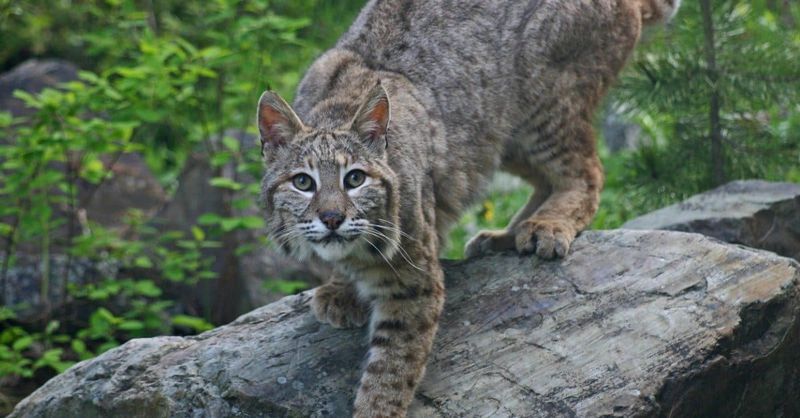
Talk about adaptable! Florida’s bobcats navigate everything from Everglades wetlands to suburban golf courses with remarkable ease. During my vacation in Naples, I watched a bobcat hunting on a golf course pond edge, completely unfazed by distant golfers.
Unlike their endangered cousin the Florida panther, bobcats maintain stable populations throughout the Sunshine State. They’ve mastered living alongside humans while remaining largely unseen.
Florida residents should avoid leaving small pets unattended outdoors, especially at dawn and dusk when bobcats actively hunt. Trim dense vegetation near homes to eliminate hiding spots, and never feed wildlife—it disrupts natural behaviors and creates dangerous dependencies.
4. Georgia’s Woodland Hunters
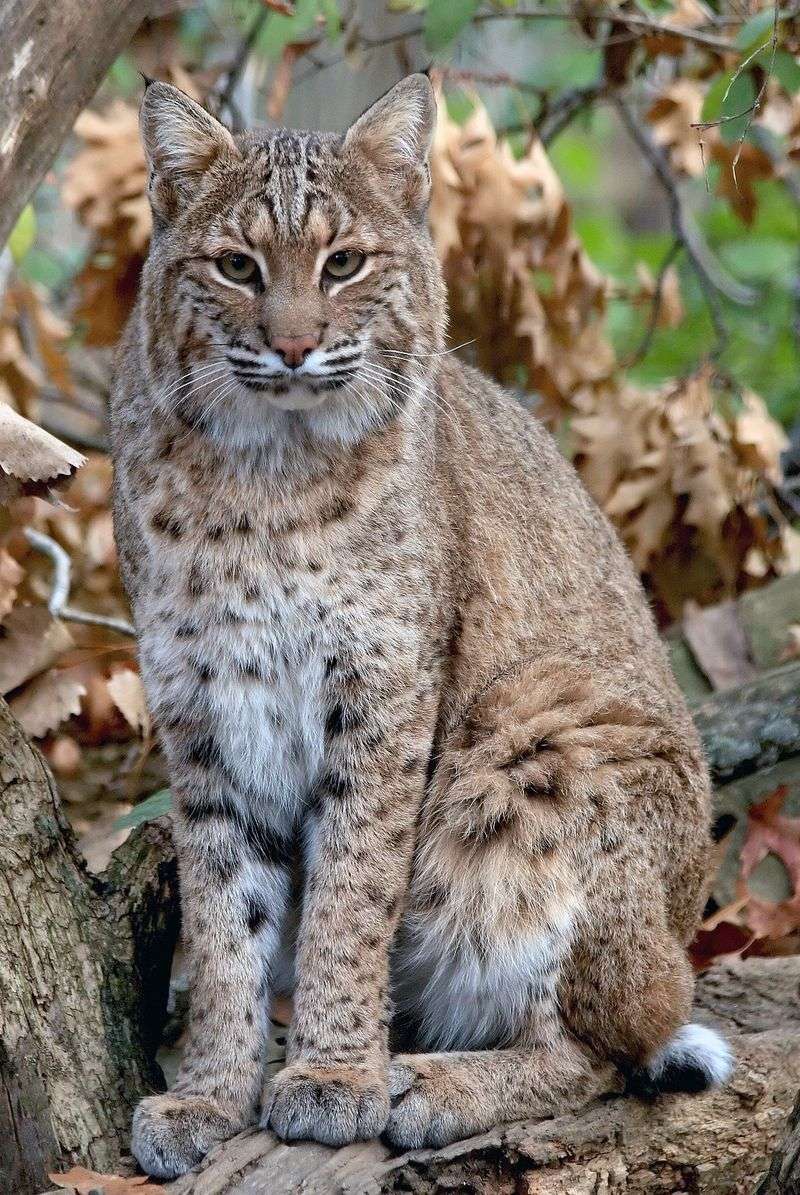
Georgia’s diverse landscapes from the Appalachian Mountains to coastal plains provide perfect bobcat habitat. Last fall while mushroom hunting near Athens, I froze as a bobcat crossed the trail just twenty feet ahead—neither of us expecting the encounter!
These secretive predators particularly thrive in Georgia’s mixed hardwood forests and pine plantations. Their populations remain healthy despite habitat changes from agriculture and timber harvesting.
Georgians camping in bobcat territory should keep food secured in animal-proof containers. Make noise while hiking to avoid startling these cats. If you spot one, consider yourself lucky—most Georgians go their entire lives without seeing these elusive creatures despite sharing the landscape with them.
5. Illinois’ Prairie Prowlers
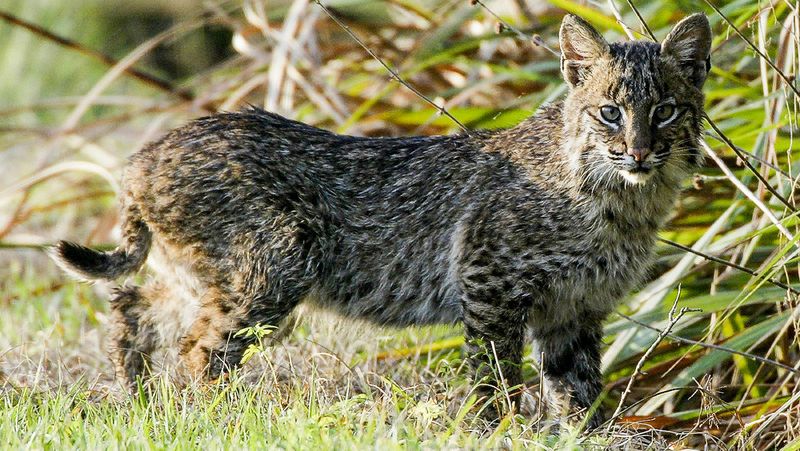
Bobcats have made an impressive comeback in Illinois after nearly disappearing in the mid-1900s! My wildlife biologist friend showed me trail camera footage from southern Illinois capturing five different bobcats in a single week—evidence of their remarkable recovery.
These adaptable cats now inhabit every Illinois county, with strongest populations in the southern and western regions where forested river corridors meet agricultural lands. Their recovery represents a conservation success story worth celebrating.
Illinois hikers should scan tree branches when walking wooded trails—bobcats often rest on elevated perches. Keep children within sight in natural areas, and remember that bobcats are protected in Illinois with specific hunting regulations reflecting their recovered but still-monitored status.
6. Iowa’s Farmland Felines
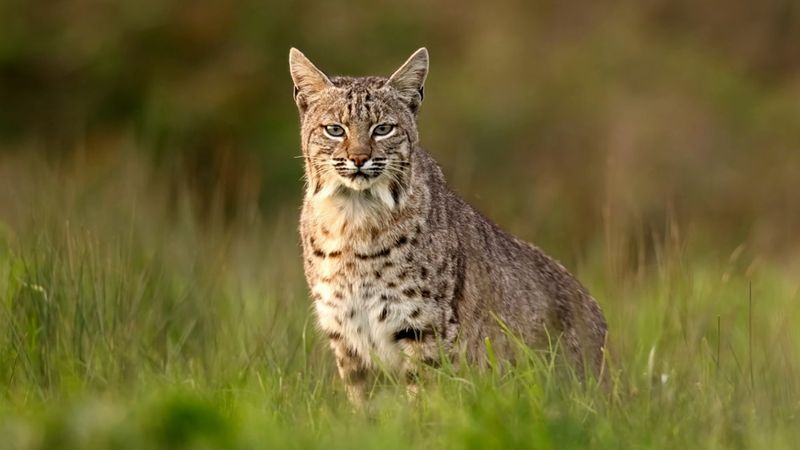
Surprise! Iowa’s agricultural landscape harbors more bobcats than you’d expect. My uncle’s trail camera on his farm near the Missouri border captures bobcats regularly, proving these cats adapt beautifully to Iowa’s patchwork of woods and fields.
Once rare in Iowa, bobcats have steadily expanded northward from Missouri, establishing breeding populations primarily in southern counties. They prefer wooded river corridors that provide travel routes between fragmented habitat patches.
Iowa farmers benefit from bobcats’ appetite for crop-damaging rodents. If you encounter one while farming or hiking, appreciate it from a distance. Remove brush piles near homes and barns to discourage bobcats from hunting too close to human activity centers.
7. Kentucky’s Ridge Runners
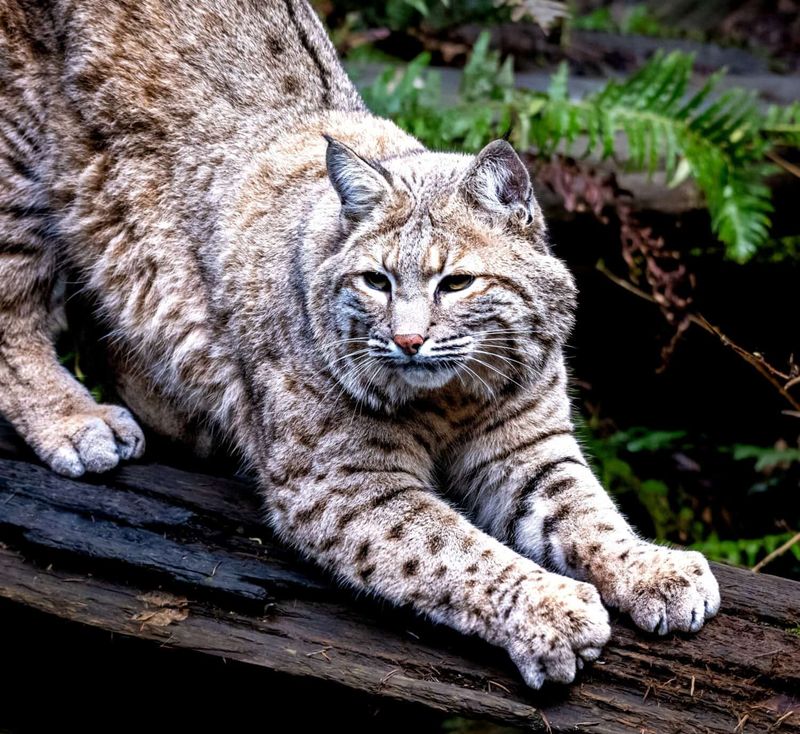
Kentucky’s rugged eastern mountains and western forests create bobcat paradise! During my Appalachian Trail section hike through Kentucky, I found distinctive bobcat tracks in mud after an overnight rain—three-inch prints without claw marks (unlike coyotes).
These muscular predators navigate Kentucky’s diverse terrain from Cumberland Mountains to western wetlands with remarkable agility. They’re particularly fond of rocky outcroppings that provide den sites and hunting vantage points.
Kentucky hikers should keep dogs leashed in bobcat territory. Avoid approaching den sites (typically rock crevices or hollow logs) during spring when females have kittens. Make noise while hiking dense undergrowth to avoid startling these normally shy cats.
8. Louisiana’s Bayou Bobcats
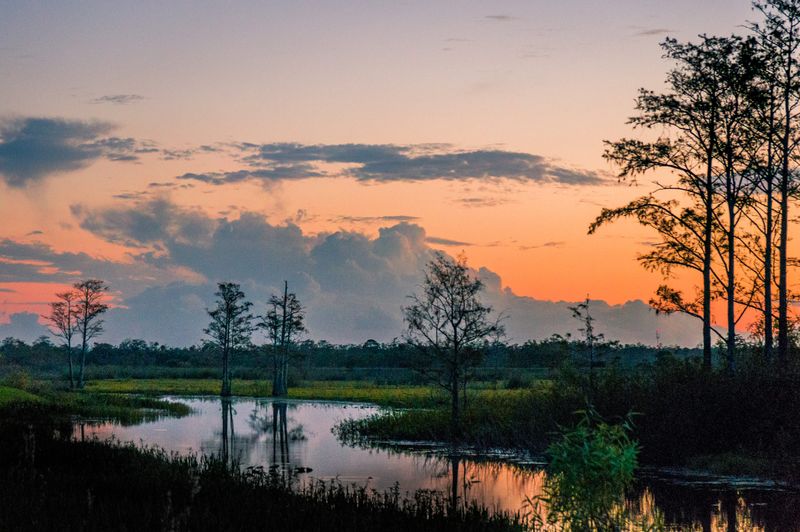
Louisiana’s swamps might seem like unlikely bobcat habitat, but these versatile hunters thrive among cypress knees and Spanish moss! My kayaking adventure through Atchafalaya Basin revealed a bobcat delicately navigating from one dry hummock to another—a masterclass in swamp survival.
Louisiana bobcats adapt to everything from coastal marshes to upland forests. They’re excellent swimmers when necessary, though they typically avoid deep water.
Cajun country residents should secure crawfish traps and fishing equipment that might attract bobcats. When exploring Louisiana’s wild places, scan shorelines at dawn for hunting bobcats. Keep a respectful distance and avoid blocking their path to escape routes if encountered.
9. Maine’s Northern Neighbors
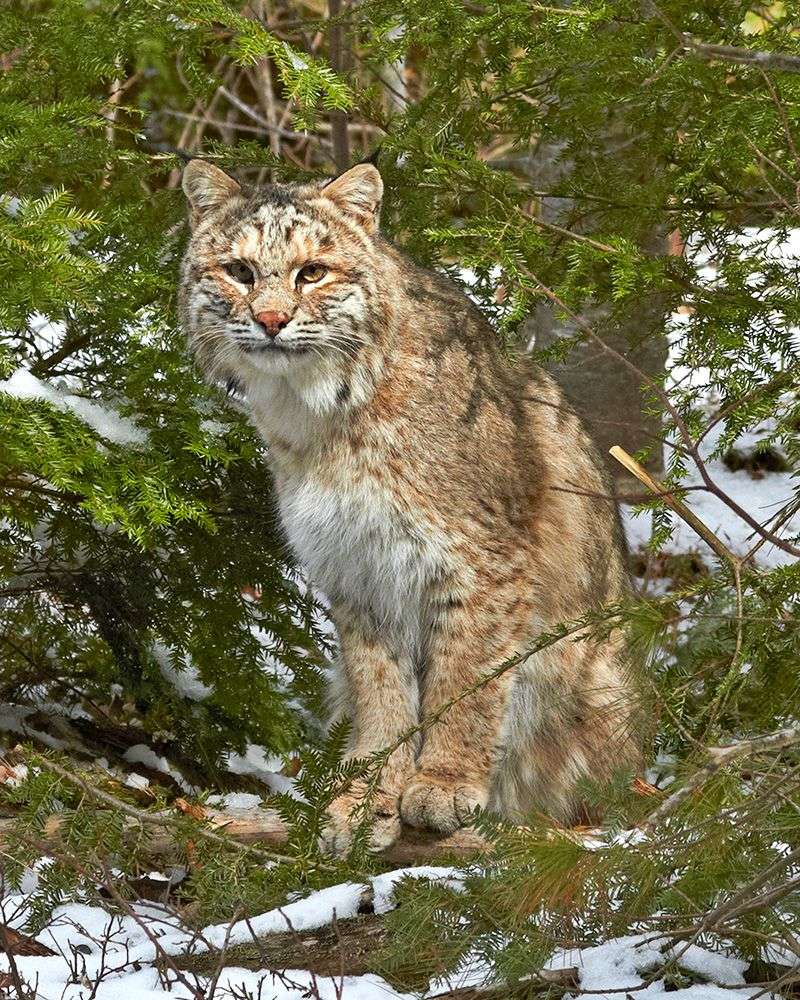
Maine’s vast forests support healthy bobcat populations despite harsh winters! While cross-country skiing near Baxter State Park, I noticed distinctive bobcat tracks showing how they conserve energy by placing back feet precisely in front foot prints when navigating deep snow.
These northern bobcats grow larger and develop thicker fur than their southern counterparts. They compete with Canada lynx in some areas but generally occupy different niches—bobcats prefer areas with less persistent snow.
Maine outdoor enthusiasts should carry binoculars for safe wildlife viewing opportunities. Secure trash and compost bins to avoid attracting bobcats to residential areas. Remember that Maine’s bobcats are critical for controlling snowshoe hare and rodent populations that might otherwise damage forest ecosystems.
10. Michigan’s Peninsula Predators
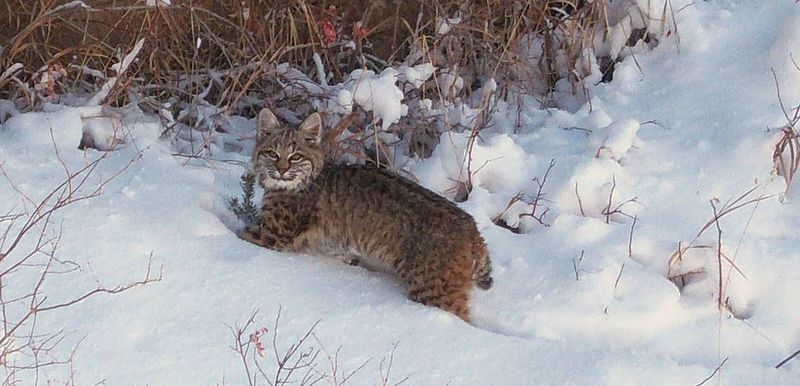
Michigan’s Upper and Lower Peninsulas both harbor healthy bobcat populations! My winter tracking workshop in the UP revealed how bobcats navigate Michigan’s deep snows—walking deliberately along fallen logs and rock outcroppings to avoid energy-sapping snow wallowing.
These resourceful predators particularly thrive in Michigan’s mixed forests and wetland edges. Upper Peninsula bobcats grow notably larger than their southern Michigan relatives, an adaptation to harsher winter conditions.
Michigan campers should hang food supplies and secure garbage to prevent attracting bobcats to campsites. Keep small children supervised in wilderness areas, especially during dawn and dusk when bobcats actively hunt. Remember that bobcats help control damaging rodent populations in Michigan’s forests and farms.
11. Minnesota’s Northwoods Natives
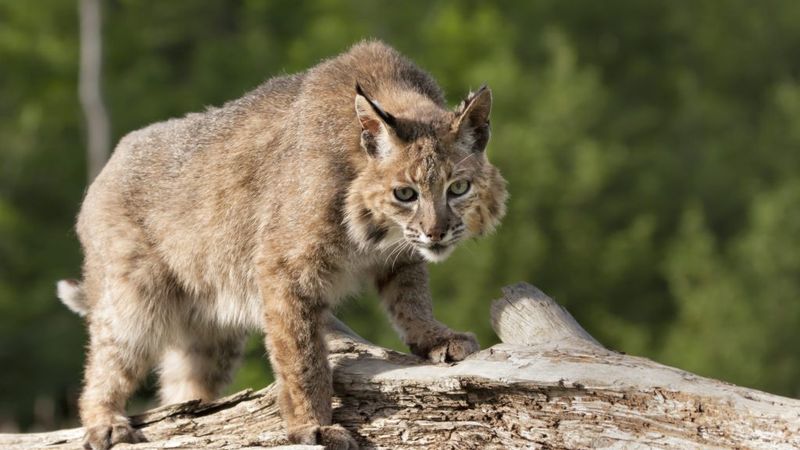
Minnesota’s vast forests and lake country provide prime bobcat habitat! My canoe trip through Boundary Waters revealed bobcat claw marks on trees—territorial signposts these secretive cats leave for others of their kind.
Minnesota bobcats reach their northern range limit here, sharing territory with their larger cousin, the Canada lynx. They prefer slightly different habitats—bobcats choosing areas with less persistent snow cover than lynx.
Minnesota anglers and hunters should secure fish cleaning stations and game processing areas to avoid attracting bobcats. When encountering one, never approach or corner it. These cats prefer fleeing to confrontation but will defend themselves if necessary. Appreciate them from a distance with binoculars or a camera with telephoto lens.
12. Missouri’s Ozark Residents
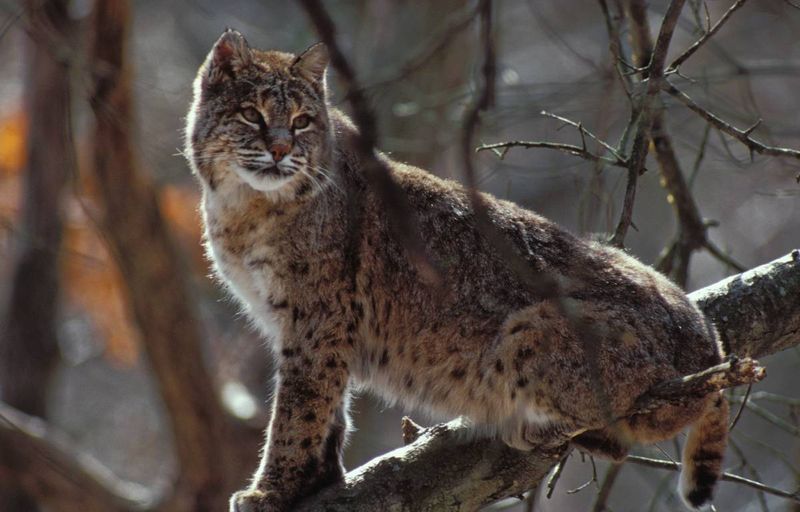
Missouri’s rocky Ozark forests provide perfect bobcat habitat! During my camping trip near Taum Sauk Mountain, I awoke to distinctive bobcat screams echoing through the valley—an unforgettable wilderness sound that’s often mistaken for a woman’s scream.
These agile predators thrive throughout Missouri but reach their highest densities in the rugged southern regions. They’ve adapted well to the state’s mix of forests, glades, and agricultural edges.
Missouri hikers should scan rocky outcroppings where bobcats often rest during daylight hours. Never approach potential den sites in spring when females have kittens. Keep dogs leashed on trails, as unleashed dogs may chase wildlife and provoke defensive responses from normally shy bobcats.
13. Montana’s Mountain Mousers
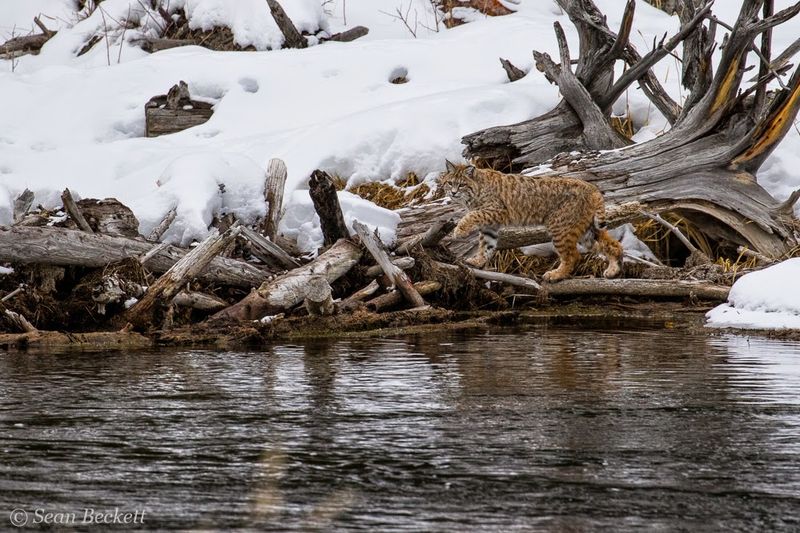
Montana’s diverse landscapes from prairie to alpine zones support thriving bobcat populations! While fly fishing the Gallatin River, I spotted a bobcat patrolling the riverbank, hunting the same waters I was—though for very different prey!
Montana’s tough terrain and unpredictable weather don’t faze these resilient cats, who navigate it all with incredible adaptability. They’re especially common in river corridors and foothill zones where prey diversity is highest.
Montana outdoor enthusiasts should carry bear spray, which works equally well as bobcat deterrent in the unlikely event of aggression. Never approach or follow bobcats, particularly in spring when females defend young. Secure food when camping to avoid attracting all predators, including these wild felines.
14. Nebraska’s River Valley Visitors
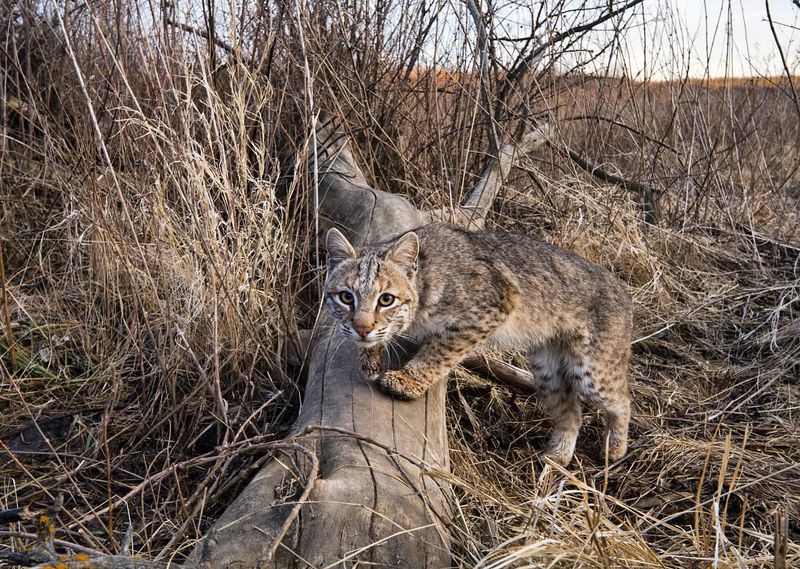
Nebraska’s wooded river corridors create perfect bobcat highways through the plains! While photographing sandhill cranes along the Platte River, I caught a fleeting glimpse of a bobcat slipping through riverside willows—a testament to their stealthy nature.
These adaptable predators follow Nebraska’s river systems—the Platte, Niobrara, Republican, and Missouri—which provide both cover and travel routes. They’re increasingly common in agricultural areas with scattered woodlots.
Nebraska landowners should consider bobcats valuable allies against crop-damaging rodents. If one takes up residence nearby, provide space and avoid disrupting its hunting patterns. Never attempt to feed or tame these wild predators, as this creates dangerous situations for both humans and bobcats.
15. New Hampshire’s Granite State Hunters
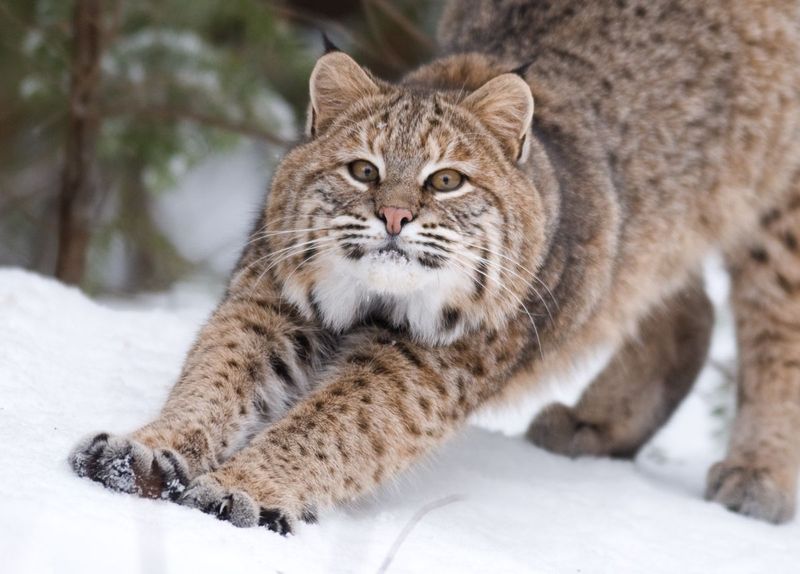
New Hampshire’s diverse forests from coastal plains to White Mountains harbor secretive bobcat populations! My winter tracking expedition near Mount Washington revealed how bobcats navigate deep snow by following packed hiking trails—energy-saving behavior that brings them closer to humans than either might prefer.
These resilient predators have rebounded impressively after population declines in the mid-1900s. They particularly thrive in southern New Hampshire’s mix of forest fragments, wetlands, and fields.
New Hampshire hikers should keep dogs leashed in bobcat territory. When snowshoeing or skiing, yield the trail to wildlife rather than forcing confrontations. Photograph tracks rather than following them to den sites, especially in spring when females become protective of kittens.
16. New Jersey’s Pine Barrens Predators
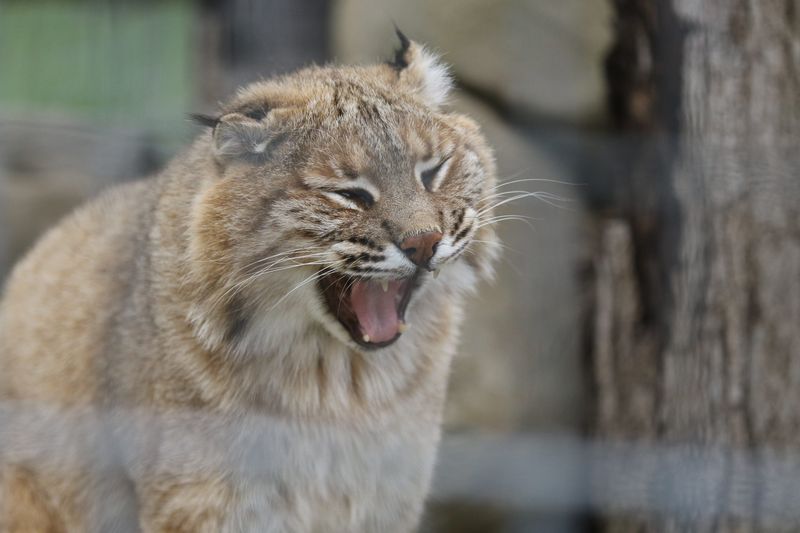
Surprise! New Jersey hosts healthy bobcat populations, especially in the northern highlands and mysterious Pine Barrens! My birding trip to the Pinelands revealed distinctive bobcat scat on a sandy trail—concrete evidence these elusive predators thrive in America’s most densely populated state.
New Jersey bobcats faced near-extinction in the 1970s but have steadily recovered through conservation efforts. They remain most numerous in the less-developed northwestern counties and the expansive Pine Barrens.
Garden State residents should secure garbage and pet food that might attract bobcats to suburban areas. Install motion-activated lights around chicken coops and small livestock enclosures. Remember that these cats help control New Jersey’s abundant rodent and rabbit populations, providing natural balance to ecosystems.
17. North Carolina’s Diverse Domain
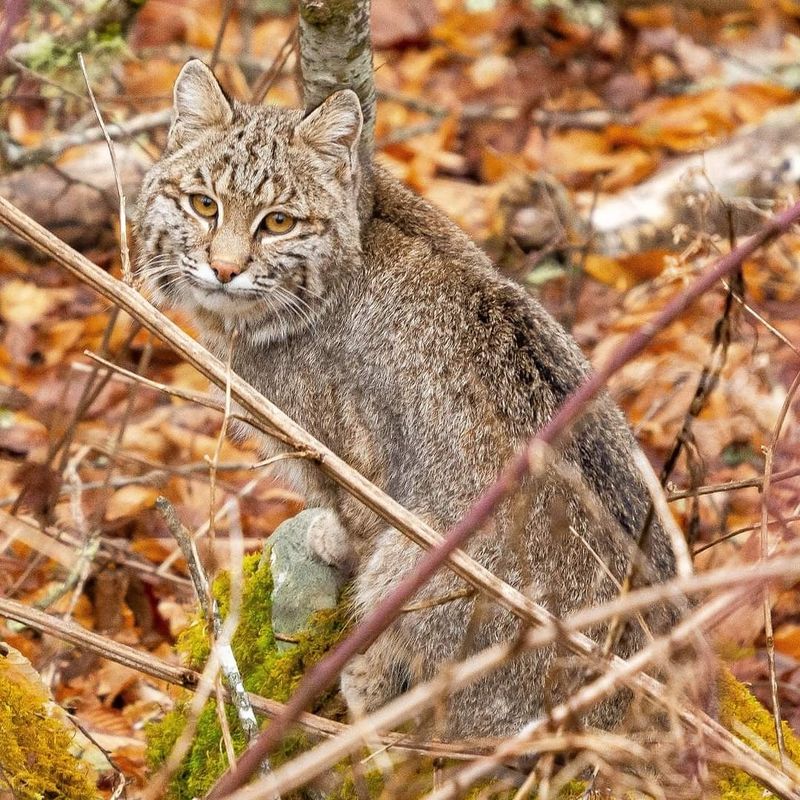
From Appalachian peaks to coastal plains, North Carolina offers perfect bobcat habitat diversity! During my Blue Ridge Parkway drive, I watched a bobcat pounce on something in a mountain meadow—a rare daylight hunting display that lasted mere seconds.
These adaptable predators inhabit every North Carolina county, from mountain forests to barrier island maritime thickets. They reach their highest densities in the diverse western mountains and the remote eastern swamplands.
North Carolina nature enthusiasts should scan forest edges at dawn and dusk for bobcat activity. Keep small pets supervised outdoors, especially in rural-suburban transition zones. Remember that bobcats rarely threaten humans and typically flee at the first sign of people.
18. Ohio’s Comeback Cats

Ohio bobcats have staged an impressive recovery after disappearing from the state in the 1850s! My wildlife photography workshop in Hocking Hills captured stunning trail camera images of these secretive returnees navigating hemlock gorges and sandstone outcroppings.
These resilient predators have naturally recolonized Ohio from neighboring states, establishing strongest populations in the southeastern counties. They prefer heavily forested areas with rocky features that provide denning sites.
Ohio hikers exploring bobcat territory should keep children within sight and dogs leashed. Scan cliff faces and rock outcroppings where bobcats often rest during daylight hours. Consider these cats living evidence of Ohio’s improving forest health and successful wildlife management.
19. Oregon’s Adaptable Athletes
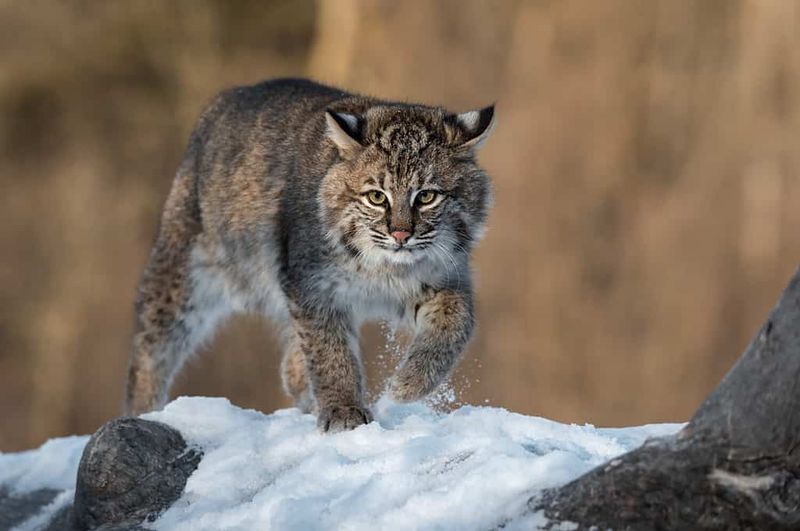
Oregon’s incredible habitat diversity from coastal rainforests to high desert supports bobcats statewide! While mushroom hunting near Mount Hood, I discovered a bobcat’s hidden daybed under a fallen Douglas fir—evidence of how these cats utilize forest deadfall for security.
These versatile predators thrive across Oregon’s varied landscapes. They’re equally at home in dense Coast Range forests, eastern sagebrush country, and Cascade mountain wilderness.
Oregon outdoor enthusiasts should secure food when camping in bobcat country. Keep small pets supervised, especially at dawn and dusk. If you encounter a bobcat that doesn’t immediately retreat, back away slowly while maintaining eye contact and speaking firmly—never run or turn your back.
20. South Carolina’s Palmetto Predators
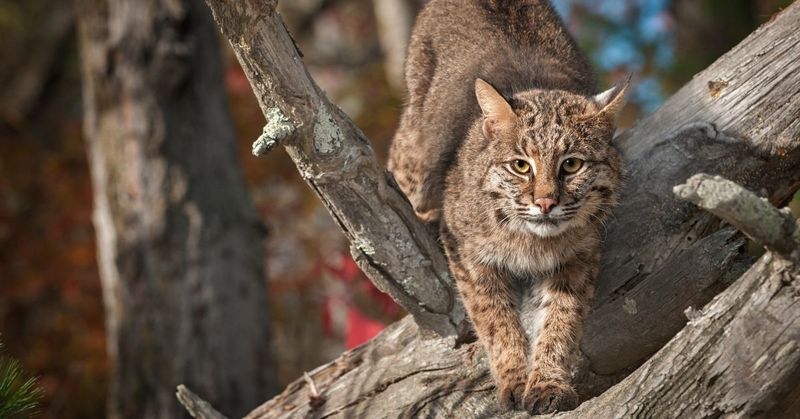
South Carolina’s diverse landscapes from mountains to marshes harbor healthy bobcat populations! My birdwatching trip to Francis Beidler Forest yielded an unexpected bobcat sighting as it stalked through cypress knees—completely oblivious to my presence on the elevated boardwalk.
These adaptable hunters thrive particularly well in South Carolina’s coastal zones and river swamps. Sea Islands like Kiawah support some of North America’s densest bobcat populations due to abundant prey and limited predator competition.
South Carolina beachgoers should avoid approaching bobcats on barrier islands where they’ve become somewhat habituated to humans. Never feed wildlife, which creates dangerous dependencies. Keep small pets leashed and supervised when visiting natural areas throughout the Palmetto State.
21. Texas’ Widespread Wild Cats
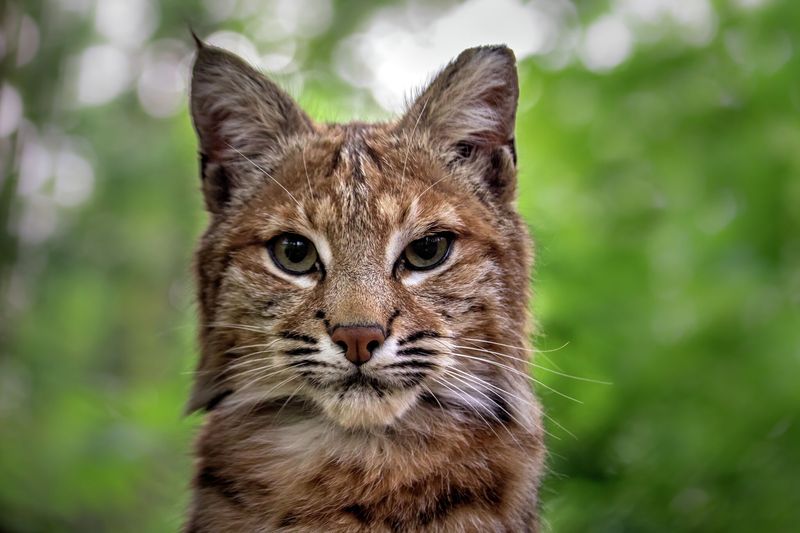
Everything’s bigger in Texas—including bobcat habitat range! During my Hill Country ranch stay, a bobcat sauntered past the porch at sunset, pausing briefly to assess me before continuing its evening hunt through cedar breaks and limestone outcroppings.
These highly adaptable felines inhabit every Texas ecosystem from East Texas pine forests to West Texas deserts. They reach their highest densities in the diverse Hill Country and South Texas brush country.
Texas ranchers and rural homeowners should secure chicken coops and rabbit hutches with predator-proof fencing. Avoid approaching bobcats, especially if they appear sick or unusually aggressive. Report such animals to Texas Parks and Wildlife rather than taking matters into your own hands.
22. Wisconsin’s Northland Navigators
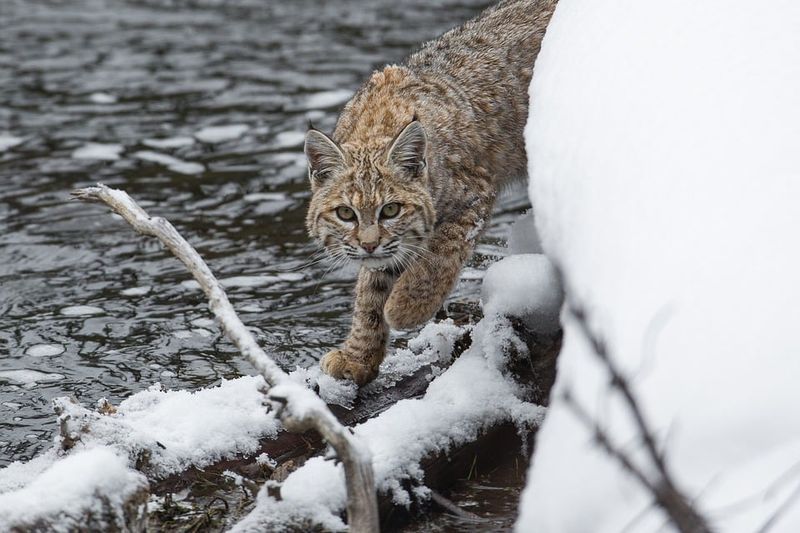
Wisconsin’s northern forests and southern oak savannas provide diverse bobcat habitat! My cross-country ski adventure in the Chequamegon-Nicolet National Forest revealed clear bobcat tracks crossing my trail—distinctive four-toed prints without claw marks, unlike canine tracks.
These resourceful predators have expanded their Wisconsin range northward in recent decades. They’re particularly numerous in the central sand counties and northwestern forest regions.
Wisconsin outdoor enthusiasts should scan forest edges at dawn and dusk for bobcat activity. Secure food scraps and garbage when camping to avoid attracting wildlife. Consider bobcats beneficial neighbors that help control rodent populations that might otherwise damage crops, gardens, and forest ecosystems.
